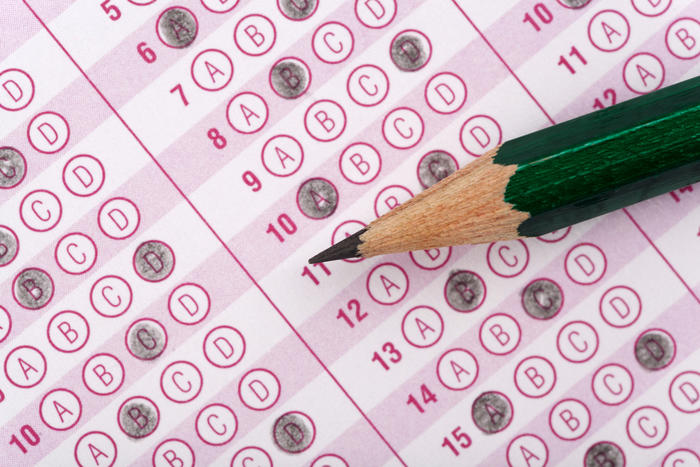When you start studying for the LSAT, your first step should be to take an LSAT diagnostic test. This test will help you understand which areas you need to improve on when studying and give you a feel for the test. It will also help you determine how much studying you need to complete to achieve a score in your desired range.
Choosing a Practice Test
It is important that the test you select to practice with is an LSAT you have never seen before. If you have previously looked at one or two questions, you could remember them, either consciously or subconsciously, and your score will be affected. The goal of taking a diagnostic LSAT is to accurately evaluate your strengths and weakness; you want to achieve a score that truly reflects your starting abilities.
There are many places to find full-length practice tests online, including the LSAC's website itself. Ideally, the test should be administered within the past 10 years. It may also be helpful to find a practice test that is in the digital format, since that is how the LSAC now administers their tests (as opposed to paper and pencil tests).
Simulate Testing Conditions
When taking your practice test, you want to fully simulate testing day conditions. This is done to give you the most precise representation of your score. Follow the guidelines below as you get ready to take your diagnostic test.
- Start in a quiet area with no distractions. Put away your phone and any other electronics that may distract you. If you are practicing with a digital LSAT, make sure the device you are taking it on is fully charged.
- Set a timer for 35 minutes. Begin your test, working on each section for 35 minutes, and stopping when time is up. Try to answer all the questions, even if you are just guessing, as you are not penalized for incorrect answers.
- Take an optional break. During the real LSAT, you are allowed a 10-15 break after section 3. It is up to you if you wish to take the break or not during your diagnostic test. We recommend that you do.
- Add in a fifth experimental section. If you want your diagnostic to mimic testing day conditions as closely as possible, you can add in the extra section that will be present on testing day. Have a friend or family member select a section from a different practice test and mix it into your chosen full test so you don't know which it is. This method works better when practicing with a paper LSAT.
Once you are finished with the practice test, you may find it helpful to take a short break before reviewing your answers. This can help you clear your mind from the stress of testing and revisit your answers with fresh eyes.
Reviewing the Practice Test
After you have completed your diagnostic test, it is time to review your answers. Use the answer key and go slowly through the test, marking the correct answer for every choice. It may be useful to mark both your choices and the correct ones on a separate sheet of paper for you to come back and reference.
Analyze Mistakes
Throughout the reviewing process, you should be analyzing the questions you answered incorrectly. This can help you gain a good understanding of your weaknesses and where you went wrong. The more in-depth you analyze your mistakes, the more you will learn. You will also gain a better comprehension of the way the LSAT requires you to think in order to find the answers. Memorization only gets you so far in the LSAT, as the questions are unique each time, so take the time to follow the logic of the test.
You also want to be sure to analyze questions that took you a long time to solve. Even if you got the question right, if you remember spending a significant amount of time on it (more than other questions), take another look at it. Try to determine what exactly held you up and identify strategies you can take to complete similar questions with more speed.
Untimed vs. Timed
Your first diagnostic test should be timed. This will help you get a feel for the length of the test and give you the most accurate score possible.
That being said, nearing the end of your studies, as you begin approaching your target LSAT score, you can start taking 2 to 4 tests per week, half of which are untimed and half of which are timed.
The untimed tests will help you apply the study strategies you are learning and focus on accuracy. The timed tests will build your stamina and get you used to answering questions while under pressure. Both ways of practicing will give you a better sense of how to complete the LSAT with the most speed and accuracy possible.

When to Start Studying
The score for your diagnostic test will likely be much lower than you want it to be, especially if you have had no previous exposure to the LSAT. However, there is no need to be discouraged. The purpose of a diagnostic test is to give you a roadmap for your studies and an idea of the challenge ahead. If you give yourself enough time between taking your diagnostic and your intended LSAT test date, you should be able to increase your score into your target range. Below, we have a general studying guideline you can consider based on where your diagnostic score lands you.
- 20 or more points away from your target score: at least 6 months of studying will be needed to make a large improvement.
- 15 or more points away: this can take anywhere between 4 and 6 months.
- 8 to 12 points away: this is the average range of numbers most people will need to improve on. It can take anywhere between 3 or 4 months to improve.
- 5 or less points away: you will need between 1 to 2 months to see an improvement. This is a higher than average diagnostic score range, and you may be able to raise your overall target score as a result.
Keep in mind that this is just a general recommendation. How long it takes you to improve your score depends on many different factors, including your study style, your learning materials, and how much time you put into studying each day.
Additionally, the closer you are to your target score (say you have a 165 and you wish to obtain a 170), the harder it will be to close the gap between those last 5 points. This is due to the type of questions you will need to master being more difficult to understand and harder to consistently score correctly on.
Achieving Your Desired Score
While your target LSAT score may seem difficult to obtain, your first step in achieving it is taking a diagnostic test. This test can help you determine your strengths and weaknesses in the LSAT, guiding you towards developing a helpful personalized study plan. Attaining your desired score isn't the easiest thing to do, but with the help of a diagnostic test, you will definitely be heading in the right direction.












